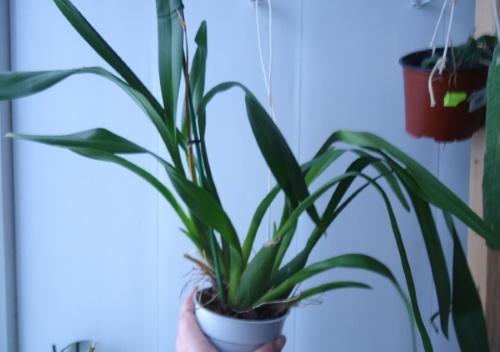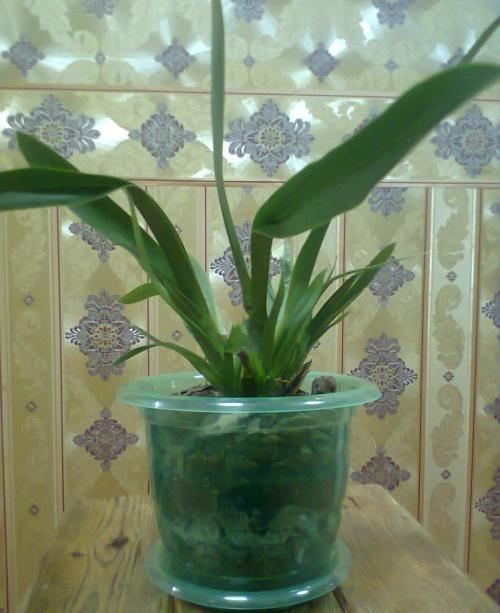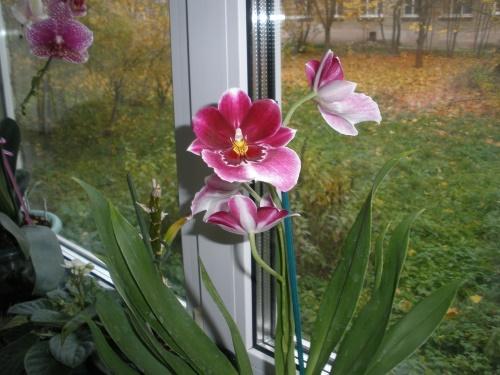We determine why miltonia does not bloom, and we solve the problem
 All orchids are famous for their flowering, but miltonia with their large inflorescences occupy a special place. Among epiphytes, these are the most capricious plants and it is not surprising that the question of why miltonia does not bloom is quite relevant among flower growers. This variety is demanding to care for and needs more attention than other orchids. From growing conditions to a well-regulated irrigation regime - everything is important to them. And if minor deviations may not affect the general "well-being" of plants, then all requirements must be strictly observed for flowering.
All orchids are famous for their flowering, but miltonia with their large inflorescences occupy a special place. Among epiphytes, these are the most capricious plants and it is not surprising that the question of why miltonia does not bloom is quite relevant among flower growers. This variety is demanding to care for and needs more attention than other orchids. From growing conditions to a well-regulated irrigation regime - everything is important to them. And if minor deviations may not affect the general "well-being" of plants, then all requirements must be strictly observed for flowering.
Why miltonia does not bloom: common cultivation mistakes

- lack of lighting;
- non-compliance with the temperature regime of growing;
- improper watering;
- lack of nutrients.
Distinguish miltonia from others orchids easy in appearance. In addition to aerial roots, it has flattened oval pseudobulbs. The roots themselves are thinner than those of other epiphytes of this species. Peduncles form at the base of pseudobulbs and can have up to 20 large flowers. In their shape, they are similar to large pansies and do not fall off until 1.5 months.
Miltonia lighting requirements

In nature, these epiphytes grow in tropical forests under the canopy of trees, so they easily tolerate partial shade. But to bookmark a peduncle, they need brighter lighting. In winter, flowers must be supplemented. But in the summer, the western window will be the optimal place for miltonia. If kept on a south or east windowsill, leaves have a chance of getting burned.
The leaves of the plant themselves will tell you if everything is in order:
- If they are green with a slight pinkish tint, you do not need to do anything. Miltonia has enough light.
- The leaf plate darkened and turned green - there was a lack of lighting on the face. You need to install a lamp or rearrange the pot.
- A reddish-brown tint or fading of leaves to a straw color indicates an excess of sunlight. The flower should be urgently removed to a more comfortable place where direct rays will not fall on it.
Features of the temperature regime of detention
 Miltonias are called plants of moderately warm content for a reason. They do not tolerate heat well and not only refuse to bloom, but may even die altogether. Specific temperature values depend on the species of the flower, because miltonia have many hybrids. But in general it boils down to observing the differences between day and night content.
Miltonias are called plants of moderately warm content for a reason. They do not tolerate heat well and not only refuse to bloom, but may even die altogether. Specific temperature values depend on the species of the flower, because miltonia have many hybrids. But in general it boils down to observing the differences between day and night content.
The difference between day and night temperatures should be between 5 and 10 ° C. For example, if in the summer the room is 20 ° during the day, then at night it should be no more than 14 °. For winter content, the difference is slightly less: 12 ° and 8 ° heat, respectively.
How to water miltonia
 The substrate must not be allowed to dry out completely. The soil should be moist at all times. Watering frequency depends on the composition of the soil. If the epiphyte grows in the bark, it will need to be watered more often.Rapid drying can be prevented by adding peat or sphagnum to the soil mixture. Then watering will be more rare, because the soil will stay moist longer.
The substrate must not be allowed to dry out completely. The soil should be moist at all times. Watering frequency depends on the composition of the soil. If the epiphyte grows in the bark, it will need to be watered more often.Rapid drying can be prevented by adding peat or sphagnum to the soil mixture. Then watering will be more rare, because the soil will stay moist longer.
Miltonia is also demanding on air humidity. It must be at least 60%. At lower rates, the orchid not only refuses to bloom, but the leaves seem to wrinkle, resembling an accordion. To avoid this, place the pot on a pallet of wet pebbles. You can also gently spray the leaves, but so that the water does not remain in the sinuses.
Feeding frequency
 For the growth and establishment of flower buds, an orchid needs a balanced diet. During the growing season, mineral complexes should be added to the water during irrigation. You can alternate this top dressing with spraying. In this case, the concentration of fertilizer should be reduced by 2 times against the proportion indicated on the package.
For the growth and establishment of flower buds, an orchid needs a balanced diet. During the growing season, mineral complexes should be added to the water during irrigation. You can alternate this top dressing with spraying. In this case, the concentration of fertilizer should be reduced by 2 times against the proportion indicated on the package.